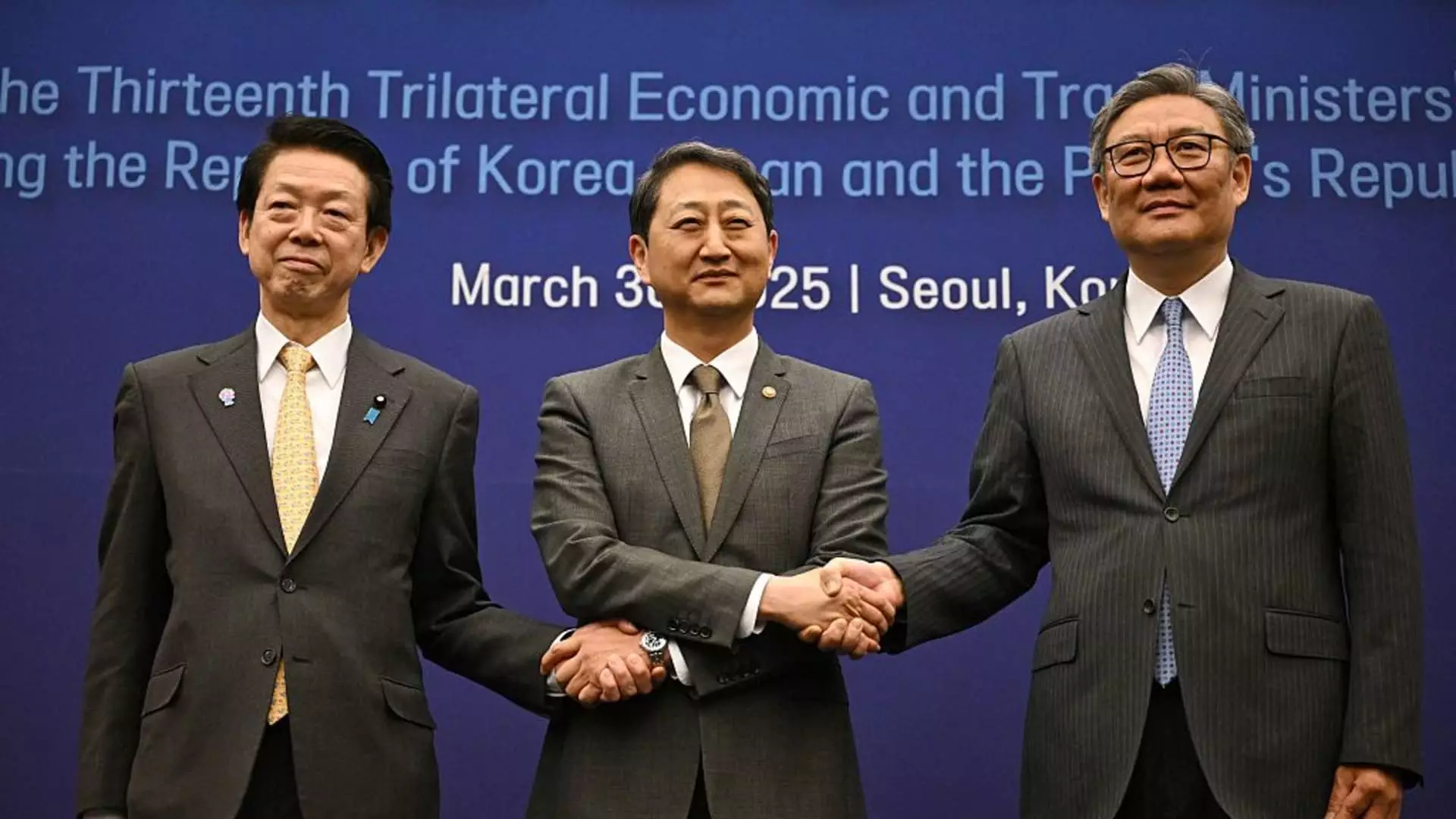Recently, South Korea, China, and Japan convened their first economic dialogue in five years, an event that aimed to address the increasingly precarious state of regional trade amidst the unfolding consequences of U.S. tariffs. While the ambition behind the summit is commendable, one can’t help but view the meeting as a mere public relations exercise—an attempt to appear united in the face of an external threat while failing to confront the underlying tensions that stifle genuine cooperation.
It’s as if these nations have chosen to sidestep core issues—territorial disputes, historical grievances, and Japan’s controversial wastewater release from the Fukushima plant—all of which loom larger than the tariffs imposed by a distant administration. The rhetoric of cooperation sounds hollow without a commitment to addressing these grievances. The ministers may proclaim their desire for a more integrated economic future, but actions speak louder than words.
RCEP: A Glimmer of Hope or a Familiar Trap?
The dialogue spoke of the Regional Comprehensive Economic Partnership (RCEP) and the prospective Korea-China-Japan Free Trade Agreement. Yet, the mere mention of these frameworks raises an important question: will these platforms be utilized as tools for genuine progress or simply as a veneer to obscure discord? RCEP, despite its lofty goals to lower trade barriers, has shown little effectiveness in resolving the actual geopolitical and economic rifts between these nations.
When South Korean Trade Minister Ahn Duk-geun emphasized the need to “strengthen the implementation of RCEP,” he inadvertently highlighted the lack of urgency in realizing these trade agreements. If the past five years have taught us anything, it is that multilateral agreements can become cumbersome bureaucracies devoid of real impact, particularly when foundational issues are left unaddressed.
The Shadow of Trump Casts Long
As the specter of U.S. tariffs looms over this dialogue, particularly with Trump’s brand of economic nationalism threatening trade ecosystems worldwide, the urgency for East Asia to find a cohesive front is palpable. Nonetheless, instead of leveraging this external threat to foster cooperation, the meeting seemed more like a staged photo opportunity than a genuine endeavor to enhance economic ties. The backdrop of isolationist U.S. policies should have galvanized these nations into a meaningful alliance, yet the fears and rivalries of the past seem to be far more potent.
With countries like South Korea and Japan relying heavily on exports to the U.S., the pain inflicted by tariffs is real and significant. Ideas for collaboration are essential, yet without consistent and genuine diplomacy, such initiatives become little more than futile gestures that risk being drowned out by far more pressing political realities.
In this increasingly fragmented global landscape, the outcome of this dialogue is a stark reminder that while economic cooperation is desirable, it is also inherently limited by historical animosities and present-day realities. The call for collaboration, noble as it is, may ultimately fall victim to the fraught dynamics between these neighboring powers unless unapologetic honesty prevails over political gamesmanship.

